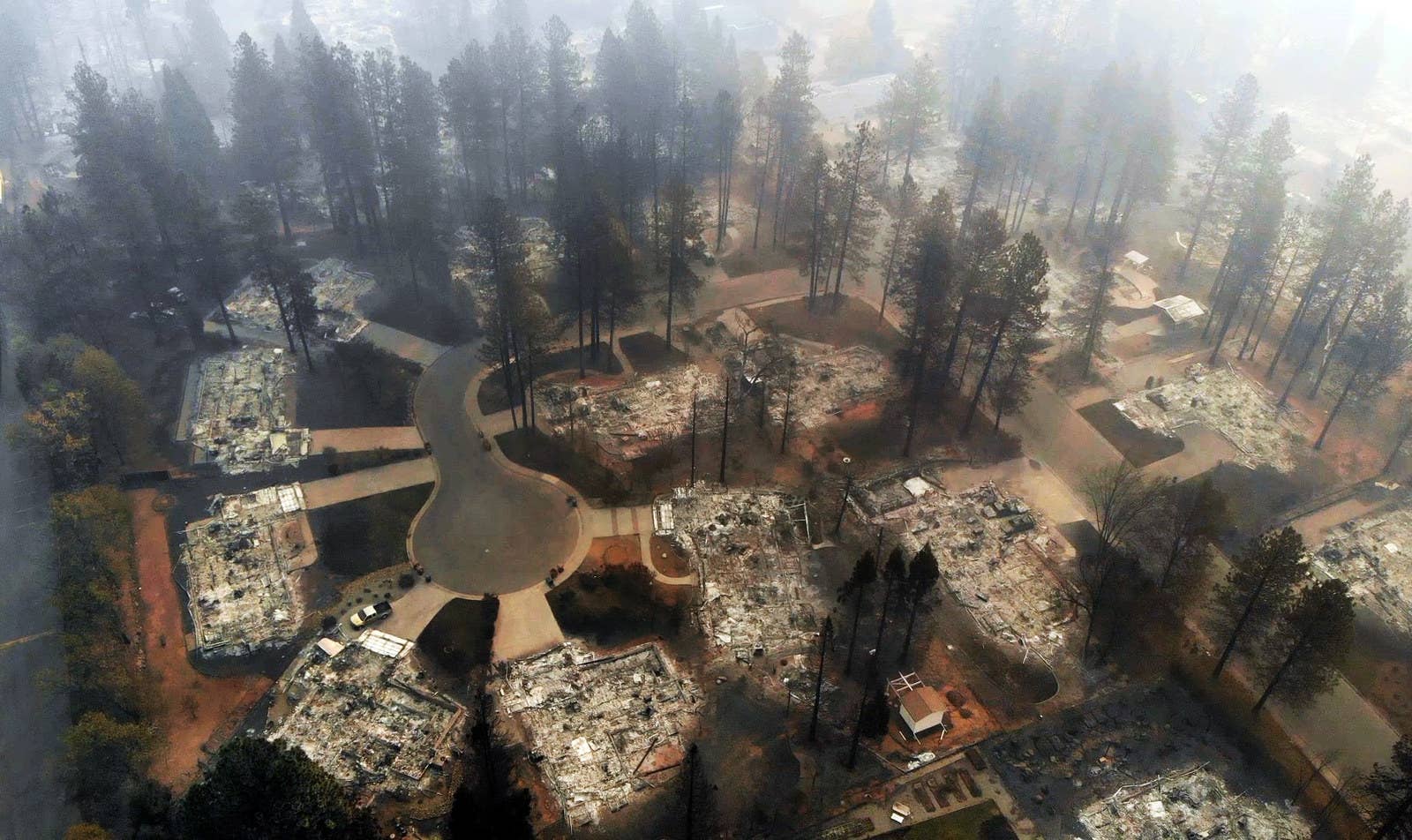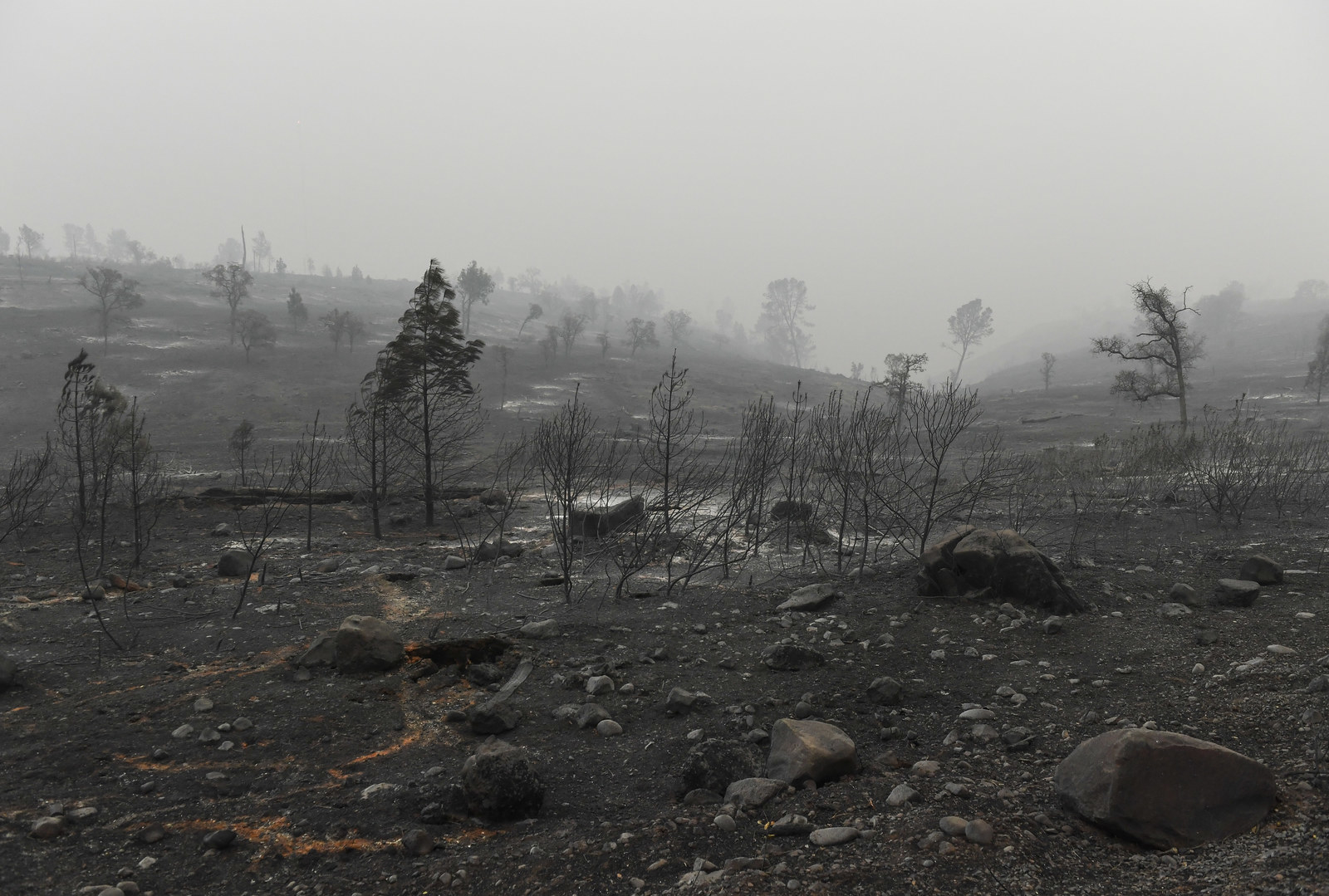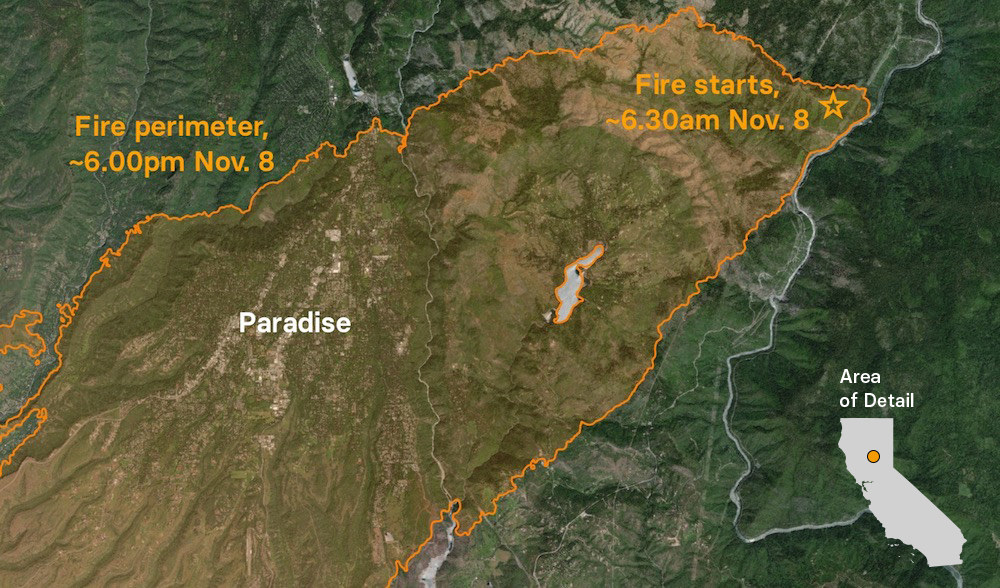
Some of the news photos from the devastation in Paradise, California, show a surprising scene: Green, living trees stand near homes that have been reduced to ashes.
They reveal that wildfire is a capricious enemy, but also indicate that there’s more to preventing catastrophic loss of lives and property than the prescriptions offered by the president of the United States — whose tweets and public statements suggest that what California needs to do is hoard water, cut down trees to prevent fires spreading, and get busy raking.
There is no reason for these massive, deadly and costly forest fires in California except that forest management is so poor. Billions of dollars are given each year, with so many lives lost, all because of gross mismanagement of the forests. Remedy now, or no more Fed payments!
California wildfires are being magnified & made so much worse by the bad environmental laws which aren’t allowing massive amounts of readily available water to be properly utilized. It is being diverted into the Pacific Ocean. Must also tree clear to stop fire from spreading!
While thinning forests might work in some areas, studies indicate that it’s unlikely to be an effective remedy for California or the West as a whole — and it would have done little to curb the state’s most destructive recent fires.
As BuzzFeed News reported in July, California’s escalating problems with destructive wildfires have been driven by a warming, drying climate, and a massive expansion of housing in what experts call the wildland–urban interface. This has not only put people in the line of fire but has also increased the chances of a conflagration — because power lines and other human infrastructure and activity are the main sources of ignition.
But in drawing attention to forest management, Trump has tapped into a contentious scientific debate: Can the American West’s growing problems with wildfire be solved, in part, by thinning overgrown forests? It’s been going on for years, pitting logging interests eager to start their chainsaws against environmentalists opposed to any tree-clearing.
Most fire ecologists and foresters now agree that a decades-long policy of suppressing fires in the forests of the American West, a campaign fronted by Smokey Bear, was a bad idea. At best, it damaged ecosystems that need to burn from time to time to retain their biodiversity. At worst, it created a tinderbox of unnaturally dense vegetation.

Across the West as a whole, however, there’s little hard evidence that thinning forests will do much to reduce damaging wildfires. In 2016, ecologists led by Curtis Bradley of the Center for Biological Diversity in Tucson, Arizona, looked at 1,500 fires over three decades that collectively burned across more than 35,000 square miles. They found that forests that had been selectively logged actually experienced more severe fires. The least severely burned forests, it turned out, were the most heavily protected where no logging took place — the very ones that were supposed to be most at risk.
That hasn’t stopped state, federal, and environmental groups from coming together to thin California’s forests in an attempt to reduce fire risks through projects such as the Tahoe–Central Sierra Initiative, launched in 2017, which aims to remove millions of trees from the Sierra Nevada mountain range.
Yet according to researchers led by Tania Schoennagel at the University of Colorado, Boulder, the economics of trying to reduce fires by thinning forests don’t add up. Over the past decade, the US Forest Service has spent almost $3.4 billion trying to reduce fuel loads; in total, it thinned around 27,000 square miles of forest between 2001 and 2015. But that’s just a tiny fraction of the West’s forests, which means that a treated area has only a 1% chance in any given year of encountering a wildfire.
So even if forest thinning reliably had the desired effect of reducing fire intensity, the effort would have to be increased many times over to have a substantial effect. Given the costs, Schoennagel and 11 other leading ecologists concluded in a paper published last year that “fuels reduction cannot alter regional wildfire trends.”
“This is an area where there are a lot of unknowns and it seems that the returns on investment are pretty low,” Schoennagel told BuzzFeed News.
Commercial loggers are keen to step into the fray, but they are most interested in harvesting bigger trees that are more resilient to fire — which scientists agree should be left behind. Clearing saplings and undergrowth doesn’t provide great opportunities to profit, and some ecologists see big dangers in allowing commercial logging under the guise of fuel reduction.
Thin a forest too much and you reduce natural windbreaks that can help slow a fire’s spread, Dominick DellaSala of the Geos Institute in Ashland, Oregon, told BuzzFeed News. “You’re going to get a fire racing through.”

Still, supporters of thinning argue that it is a viable option in some forests, especially dry pine and mixed-conifer forests at lower elevations. Historically, forests like these burned with low intensity every decade or so, keeping them patchy and fairly sparse. There, decades of fire suppression should be countered with careful thinning to mimic the natural state, according to Scott Stephens, a forestry scientist at the University of California, Berkeley.
Stephens has compared low-elevation forests in Southern California with those over the border in Baja California, Mexico, where fire suppression didn’t begin until the 1970s. The naturally patchy Mexican forests, he has found, are much more resilient: Even in the face of a four-year drought and a 2003 wildfire, only 20% of the trees died. (In the Cedar fire in San Diego County that same year, between 40% and 95% of trees in the affected areas perished.)
What Californians want is an end to the mega-destructive fires that have blighted the state in the past couple of years. But the circumstances of the worst fires don’t suggest that forest thinning would have helped much. The Woolsey fire, which devastated Malibu this month, and the Thomas fire, which raged around Santa Barbara from December 2017 into the new year, both burned through scrubland, not forests.
Paradise, in the foothills of the Sierra Nevada, was in theory a better candidate for protection by forest thinning. Yet the Camp fire that rapidly engulfed the town on Nov. 8, driven by strong winds, mostly didn’t approach through an overgrown forest.

“The most destructive fires have everything to do with weather, which has everything to do with climate,” Richard Hutto, an ecologist at the University of Montana, Missoula, told BuzzFeed News.
It’s hard to see Californians retreating from the wildland–urban interface to which many have moved in recent decades — in part driven by escalating housing costs in the state’s major cities. (Paradise was a prime example, growing from just over 8,000 people in 1960 to more than 26,500 by the time the fire hit.) However, homes built in these areas could be made more fire-resistant.
View this video on YouTube
Cutting trees and clearing undergrowth around homes definitely makes sense. But research by Jack Cohen of the US Forest Service’s Missoula Fire Sciences Laboratory in Montana has shown that the biggest danger isn’t from homes being ignited by nearby burning vegetation, but rather from the rain of burning embers that falls from the sky.
“When a fire overtakes a town like Paradise, what usually happens isn't that the trees ignite buildings, but rather that buildings that haven’t been hardened against fires ignite from a storm of embers that got ahead of the main fire front,” Cal Fire Deputy Chief Scott McLean told BuzzFeed News.
If your home isn’t protected against this onslaught, with fire-resistant roofing and siding and vents that can be closed to prevent embers from being sucked inside, it can burn to the ground even if the surrounding vegetation survives. Fire-hardened homes, meanwhile, may sometimes emerge unscathed even if a wildfire passes through a neighborhood.
“This is a home ignition problem much more than a wildland management problem,” Schoennagel said. ●
Brianna Sacks contributed reporting to this story.
CORRECTION
Smokey Bear fronts a campaign for wildfire prevention. An earlier version of this article suggested that the character fronts a policy of wildfire suppression.

